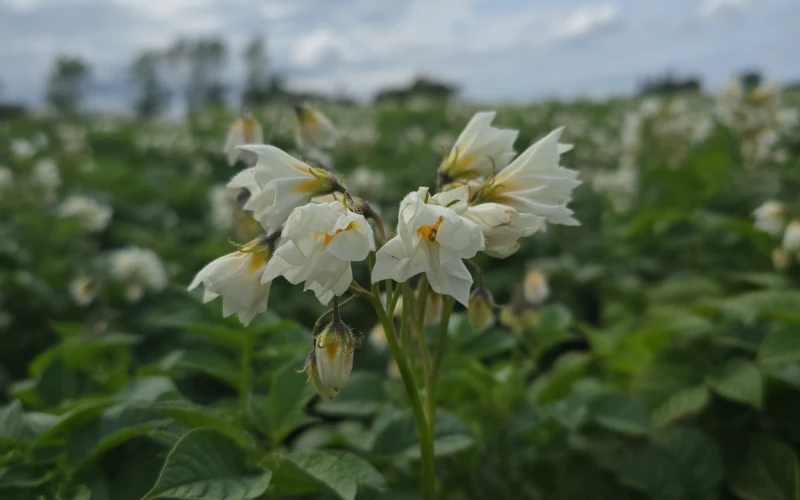Potato Wart
Description
Potato wart is a soil-borne fungal disease that deforms potato tubers by causing abnormal growths, or warts, which can severely reduce crop yields. This fungus does not pose a risk to human or animal health but has considerable economic implications for potato growers due to the damage it causes to the potatoes, making them unmarketable.

© Karsten Lindegaard via iNaturalist.org, used under CC BY-NC
Introduction and Spread
Potato wart was first identified in Newfoundland and Labrador in 1909 and has since been a concern in various parts of Canada, including a notable presence in Prince Edward Island. It primarily spreads through the movement of infected soil and plant material.
Distribution
Internationally, potato wart is found in several countries across North America, South America, Europe, Asia, Africa, and the Pacific, including:
Hosts
Potato (Solanum tuberosum) is the primary host for potato wart, but it can also infect tomatoes and some wild Solanum species under certain conditions.
Symptoms
Potato wart primarily affects the underground parts of the potato plant:
Biology
The fungus survives in soil as resting spores that are extremely durable, persisting for over 40 years. These spores germinate under suitable conditions to infect new plants. The disease cycle can continue throughout the growing season, facilitated by the production of summer spores that reinfect the host.
Impacts
Economic: Severe infestations can render entire crops unsellable, leading to significant financial losses for farmers. The persistence of the fungus in the soil can lead to long-term impacts on crop rotation and field usability.
1. van de Vossenberg, Bart T L H et al. “Synchytrium endobioticum, the potato wart disease pathogen.” Molecular plant pathology vol. 23,4 (2022): 461-474. doi:10.1111/mpp.13183
2. Obidiegwu, Jude Ejikeme et al. “Managing potato wart: a review of present research status and future perspective.” TAG. Theoretical and applied genetics. Theoretische und angewandte Genetik vol. 127,4 (2014): 763-80. doi:10.1007/s00122-014-2268-0